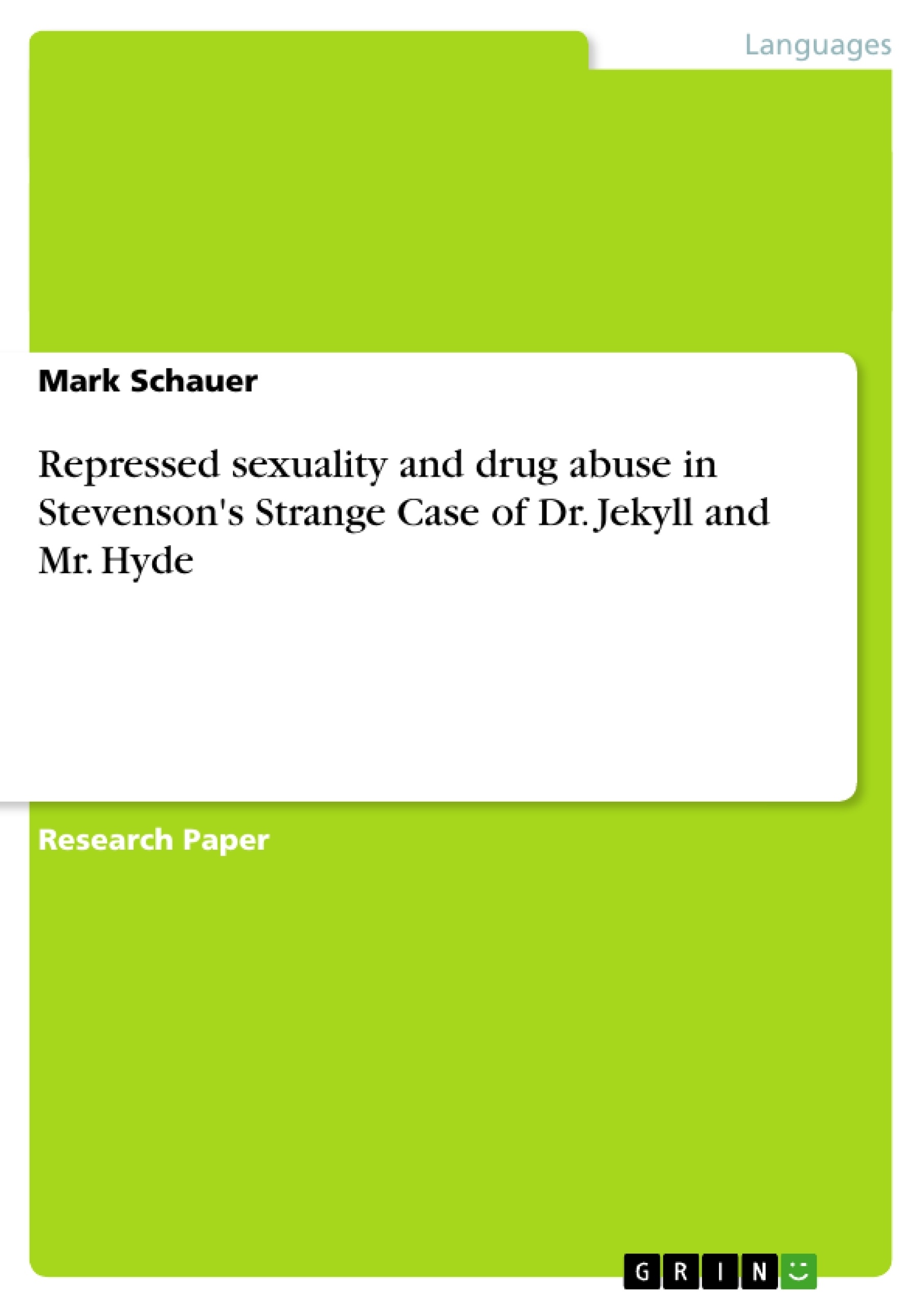Few stories that are over a hundred years old retain as much importance in popular imagination as Robert Louis Stevenson’s 1886 Strange Case of Dr. Jekyll and Mr. Hyde. Aside from the title characters becoming a shorthand description for a person who manifests a frightening bipolarity, the novel’s gothic depiction of London remains the popular conception of the city during the late Victorian era. Though the story is commonly interpreted as a depiction of good and evil and the duality of man, I submit that Jekyll and Hyde is in large part a gothic allegory about repressed homosexuality and covert substance abuse.
Repressed sexuality and drug abuse in Strange Case of Dr. Jekyll and Mr. Hyde
by Mark Schauer
Few stories that are over a hundred years old retain as much importance in the popular imagination as Robert Louis Stevenson’s 1886 Strange Case of Dr. Jekyll and Mr. Hyde. Aside from the title characters becoming a shorthand description for a person who manifests a frightening bipolarity, the novel’s gothic depiction of London remains the popular conception of the city during the late Victorian era. Though the story is commonly interpreted as a depiction of good and evil and the duality of man, Jekyll and Hyde is in large part a gothic allegory about repressed homosexuality and covert substance abuse.
Jekyll and Hyde has endured largely because the story’s dual hero/villain was conflated with Jack the Ripper, the alleged perpetrator of a series of highly publicized murders of London prostitutes that began two years after the novel was published. The assailant, who was never captured, was presumed by the contemporary press to be, like Jekyll, a respectable man of the upper class who indulged his homicidal proclivities by night in the guise of a pathologically violent alter-ego (Cohen 3). The problem with framing the coverage of these murders within the Jekyll and Hyde narrative, however, is that Hyde was never portrayed as murdering a woman. In fact, women are strikingly absent from most of the story. None of the other major characters, from Jekyll to his long-time friends, are married, and except for the young girl he tramples and his female servant, Hyde is never shown associated with a female. Despite a predominately male servant staff, Jekyll’s house is well-appointed: “Utterson himself was wont to speak of it as the pleasantest room in London” (Stevenson 16). Hyde’s own quarters in Soho, the low class neighborhood which was the epicenter of London’s gay sex trade of the era, were similarly, “furnished with luxury and good taste” (Stevenson 23). In 1886, this type of aestheticism was effeminate. Further, aside from being an unmarried middle-aged man who seems to associate exclusively with men of his own class in like circumstances, it is significant that Jekyll is only once depicted outside the house, a feminine sphere. The activity he was engaged in—sunning himself in the park—is similarly passive, indulgent, and feminine by the standards of the day.
Hyde’s ultimate crime was the murder of Sir Danvers Carew, a member of parliament. The killing was witnessed by, “a maid servant living alone in a house not far from the river,” who reported it took place sometime between “about 11” and “two o’clock when she came to herself.” (Stevenson 20-21). The deadly beating was precipitated by the, “aged beautiful gentleman” Carew approaching Hyde with, “a very pretty manner of politeness” (Stevenson 20). The text does not overtly explain why a member of parliament would approach another man in this manner at night in an area of town low-rent enough for a female servant to live in a house alone. Aside from the obvious explanation, there is quite a bit of suggestive language describing the scene to further buttress that Carew was soliciting sex: the maidservant witness was “romantically given,” Hyde, “had once visited her master,” and the murder weapon was a cane, a phallic object, which Utterson, “had himself presented many years before to Henry Jekyll” (Stevenson 21). When Utterson and Hyde first meet earlier in the story, Utterson tells him, “we have common friends,” which makes Hyde nervous (Stevenson 15).
Everyone who sees Hyde invariably describes him as young, along with other descriptions that were coded female and other, from his footsteps (“light”) to his voice (“husky, whispering”), his complexion (“dusky”) to his propensity for “hysteria”. Given his prominence in Jekyll’s will, Utterson suspects that Hyde is blackmailing Jekyll for, “some old sin, the cancer of some concealed disgrace” (Stevenson 17). Utterson never considers that young Hyde could be Jekyll’s illegitimate son, however, though illegitimacy was a common enough trope in commercial fiction of the 19th century, including Dickens’ Bleak House and Collins’ The Woman in White, both of which predated Jekyll and Hyde by decades. Is his failure to consider this possibility a result of his and Jekyll’s religiosity, or the fact that he knows such a thing would be biologically impossible in Jekyll’s case? What other relationship between two men could lead to one being the sole beneficiary of the other’s entire estate?
[...]
- Citar trabajo
- Mark Schauer (Autor), 2012, Repressed sexuality and drug abuse in Stevenson's Strange Case of Dr. Jekyll and Mr. Hyde, Múnich, GRIN Verlag, https://www.grin.com/document/230260




